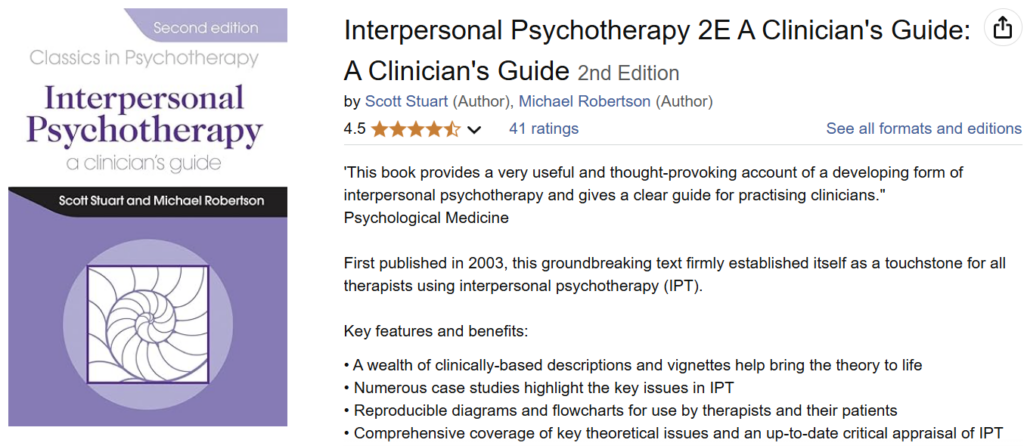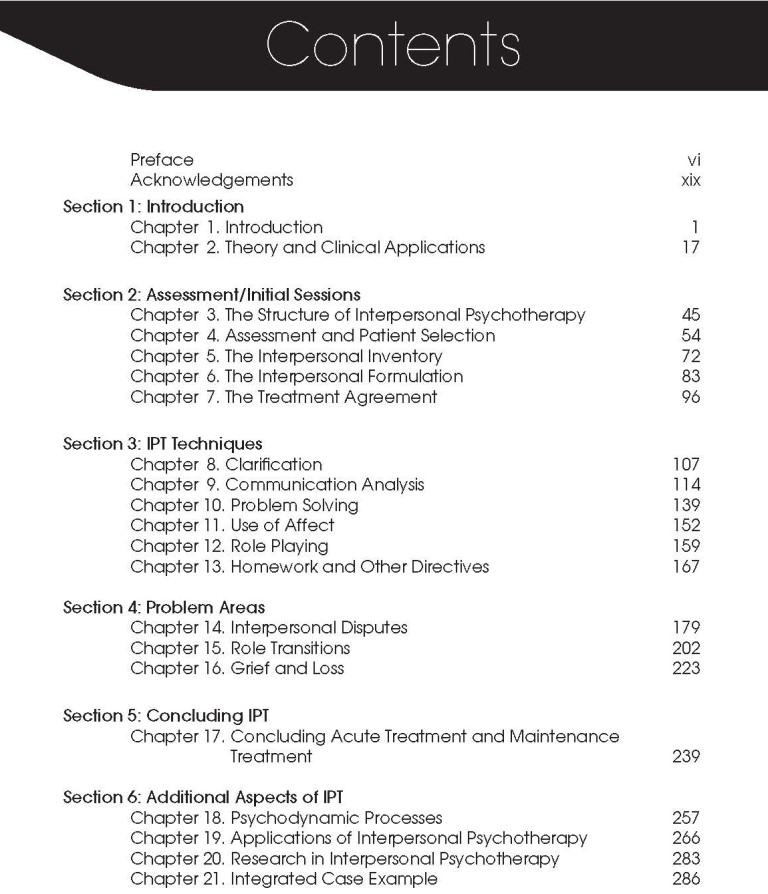IPT: A Clinician’s Guide 2nd Edition


IPT: A Clinician’s Guide (2nd ed) is recommended for everyone interested in learning about or practicing IPT. It is a required textbook for all IPT Level A training.
IPT: A Clinician’s Guide (2nd ed) is available through amazon.com and many other major distributors. The textbook is designed for clinicians using IPT in a clinical setting with a variety of patients with mood and anxiety symptoms. It describes in detail the IPT approach and structure, interpersonal and attachment theory, and clinical applications such as the Interpersonal Inventory, Interpersonal Formulation, Conflict Graph and Timeline.

